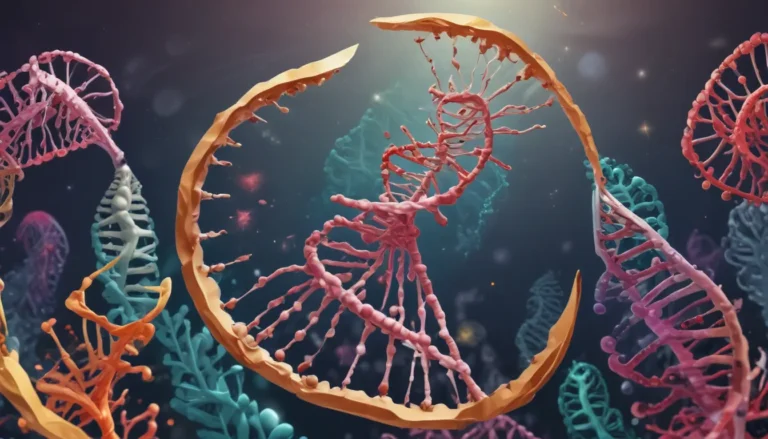A Note About Images: The images used in our articles are for illustration purposes only and may not exactly match the content. They are meant to engage readers, but the text should be relied upon for accurate information.
Welcome to the world of ecological restoration, where nature’s superheroes work tirelessly to heal and protect our planet. From combating climate change to preserving biodiversity, this vital process plays a crucial role in creating a sustainable future for all living beings. Join us on a journey as we explore 11 captivating facts about ecological restoration and discover its profound impact on our environment.
Key Takeaways:
- Ecological Restoration: A force for good in repairing habitats, conserving biodiversity, and combating climate change.
- Team Effort: Collaboration between scientists, communities, and traditional knowledge for a sustainable future.
Understanding Ecological Restoration
Ecological restoration is the process of repairing and revitalizing ecosystems damaged by human activities or natural disasters. This practice involves actions such as reforestation, wetland rehabilitation, and reintroduction of native species to restore the balance of nature.
The Importance of Biodiversity Conservation
By restoring ecosystems, we safeguard the diverse range of plant and animal species that depend on these habitats for survival. Conserving biodiversity is essential for maintaining healthy ecosystems and preventing species extinction.
Combatting Climate Change through Restoration
Restoring ecosystems like forests helps sequester carbon dioxide from the atmosphere, reducing greenhouse gas emissions. Trees and vegetation play a key role in absorbing CO2 through photosynthesis, contributing to a healthier environment and mitigating climate change impacts.
Enhancing Water Quality Through Restoration
Restoring wetlands and riparian areas improves water filtration and reduces pollution. These habitats act as natural filters, enhancing the overall quality of water bodies and promoting environmental sustainability.
Improving Soil Health and Fertility
Ecological restoration practices such as reforestation and cover cropping replenish nutrients in the soil, prevent erosion, and promote sustainable agricultural practices. Healthy soils are vital for supporting plant growth and ecosystem vitality.
Economic Benefits of Ecological Restoration
Investing in ecological restoration projects creates job opportunities in fields like habitat restoration, forestry, and conservation. Restored ecosystems can also attract tourism, boosting local economies and providing recreational opportunities.
A Global Movement Towards Restoration
Efforts to restore ecosystems are taking place worldwide, with organizations, governments, and communities coming together to conserve natural resources and revive degraded lands in various regions and ecosystems.
Long-Term Commitment to Restoration
Successful ecological restoration projects require ongoing monitoring, management, and maintenance to ensure the continued health and biodiversity of restored habitats. Commitment to long-term sustainability is key in preserving ecosystems.
Collaboration with Local Communities
Engaging local communities and indigenous peoples in restoration projects provides valuable traditional knowledge and fosters a sense of ownership over restored habitats. Collaborative efforts enhance the success and impact of restoration initiatives.
A Multi-Disciplinary Approach to Restoration
Ecological restoration involves collaboration among professionals from diverse fields such as biology, ecology, hydrology, and environmental science. This multi-disciplinary approach ensures the comprehensive recovery of ecosystems.
Offering Hope for a Sustainable Future
Through active restoration and protection of ecosystems, we can reverse the damage caused by human activities and work towards a more sustainable future. Ecological restoration offers hope for a world where nature and people can thrive together in harmony.
Conclusion
In conclusion, ecological restoration is a powerful tool in preserving and enhancing the health of our planet. By prioritizing restoration efforts, we contribute to biodiversity conservation, climate change mitigation, and sustainable ecosystem management. Let us unite in our efforts to restore and conserve our precious ecosystems for a better and brighter future.
FAQs
-
What is ecological restoration?
Ecological restoration involves repairing and revitalizing degraded ecosystems to their natural state through rehabilitation and reintroduction of native species. -
Why is ecological restoration important?
Ecological restoration is crucial for conserving biodiversity, improving habitats for wildlife, mitigating climate change, and safeguarding ecosystem services essential for human well-being. -
Who is involved in ecological restoration?
Ecological restoration requires collaboration among scientists, conservationists, government agencies, local communities, and non-profit organizations to plan and implement restoration projects. -
What are the challenges in ecological restoration?
Challenges in restoration include invasive species, limited funding, public awareness, and the need for long-term monitoring and management to restore ecosystems effectively. -
How can individuals contribute to ecological restoration?
Individuals can support restoration efforts by participating in local projects, practicing sustainable land use, conserving resources, planting native species, and spreading awareness about ecosystem restoration.
Dive deeper into the world of ecological restoration and discover the transformative impact it has on our planet’s health and vitality. Let’s continue to work together towards a sustainable future where nature thrives, and ecosystems flourish.





